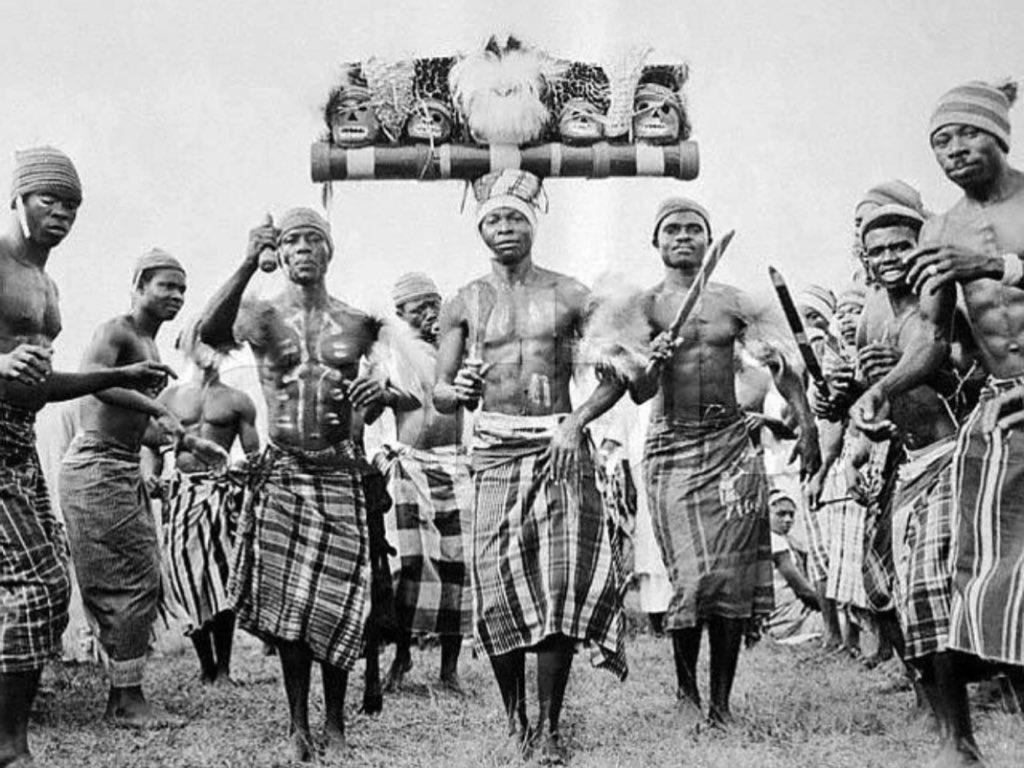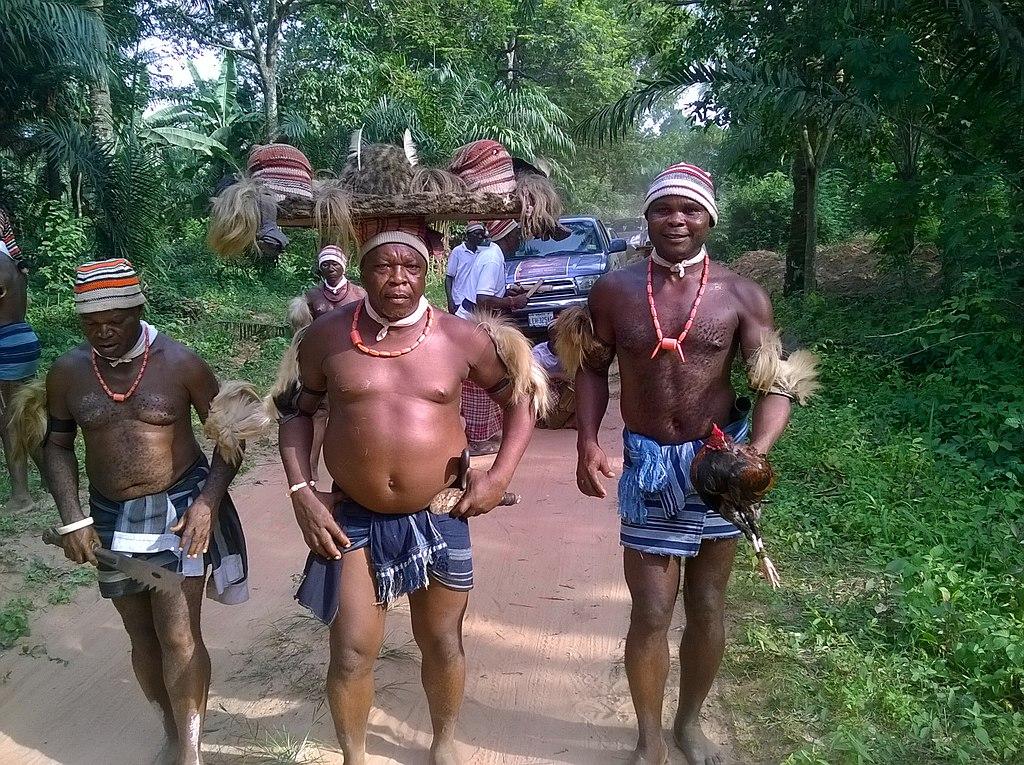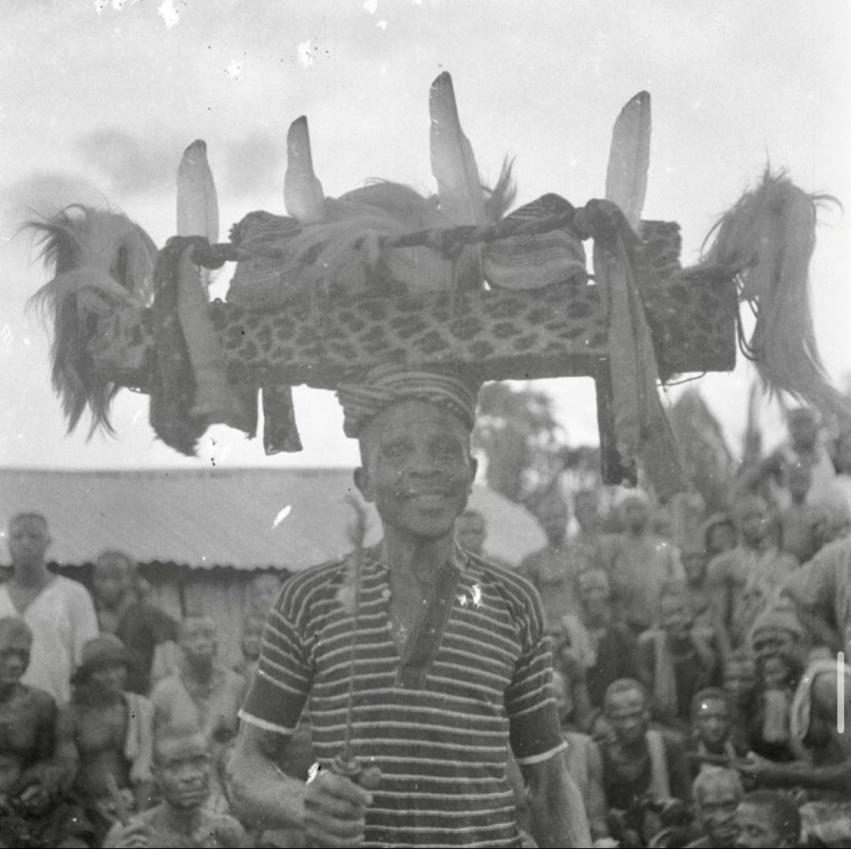In the heart of southeastern Nigeria, nestled within the red-soil landscapes of present-day Abia State, lives a people for whom courage is not just a virtue but a sacred inheritance. The Ohafia, an Igbo sub-group renowned for their martial history, carry the echoes of centuries in a dance that is part battle-cry, part memory, and part moral compass. It is called Ikpirikpi Ogu, the war dance, a ritual that heralds boys becoming warriors, then men.

In ancient Ohafia, bravery, war, and the beheading of one’s strongest opponents were a rite of passage. Across Igboland, an old saying goes: “Nwata na-agba egwu surugede marakwa na surugede bu egwu ndi mmuo”. It translates roughly to A child who dances the surugede should know that it is a spiritual exercise. This saying, aside from being symbolic for the impending dangers for one who dabbles in unsure waters, also gestures towards the endurance of tradition and the many complexities modernity cannot accommodate. Like the idea of Surugede, Ikpirikpi Ogu is more than just spectacle. It is a living ritual. At a time when oral traditions are vanishing and modernity threatens to sever the past from the present, the Ohafia war dance survives. Through choreography, costume, and symbolism, it continues to transmit lessons about identity, honour, and what it means to be a man, a warrior, a community.
Ohafia as a Warrior Nation
The legend of Ohafia as a warrior nation begins long before colonial cartographers inked Nigeria onto a map. Oral tradition holds that the Ohafia people migrated from the Benue valley, carrying with them not only their gods and kinship systems but also a commitment to war as a way of survival. In intercommunal wars, slave raids, and defensive campaigns, the men of Ohafia earned a reputation as fearless and were often contracted by neighbouring communities for protection or retribution.
In this dispensation, the ultimate symbol of this courage was the human head. To bring back the head of an enemy was to affirm one's manhood and ascend into the society of the Ogbu Isi, the "head-takers", a warrior class of profound social esteem. A severed head was not merely a trophy; it was a spiritual object, a portal through which the warrior gained communion with the ancestors and a wider connection to Igbo cosmology.
The Ohafia worldview saw battle not as destruction but as a rite and a means to moral legitimacy, a way to affirm masculine identity, and a path to societal recognition and freedom.

The Choreography of the Ikpirikpi Ogu Dance
At first glance, the Ikpirikpi Ogu may appear like any festival display—drums, dancers, spectators, movement. But it is not a performance in the generalised, entertainment sense. It is a ritualised reenactment of warrior glory, a tribute to a rich history. A vivid and moving description was given by anthropologist John McCall in 1993: “Several young, robust men, in short, coarsely woven blue loincloths, begin to move into the centre of the large clearing in front of the village meeting house. Their muscular arms are draped with the long white hair of ram’s manes, and on their heads are red, black, and white knit caps (okpu agu), each pierced with an eagle feather. They move with confidence and pride, but their leader seems even more imposing; balanced on his head is a board upon which human heads sculpted of wood are displayed… As the pace of the music increases, the pectoral flexing accelerates. The men’s chests pulsate with rippling undulations. This is ofufu… Ofufu is only performed in one context: iri agha, the Ohafia ‘war dance’.”
In one hand, the dancer holds a machete or cutlass (mm nta) while he holds a small palm shoot clenched between his teeth. This palm shoot is a sign of fasting, readiness, and fortification. Behind him, younger dancers mimic the movements: short, deliberate steps, calculated slashes in the air, sudden halts and pivots, all performed to the rapid, pounding rhythm of akwatankwa drums ( a bamboo-based drum) and high-pitched horn signals.

The basket on the head of the dance leader is called the oyaya, symbolically bearing the severed head of an enemy. Oral history has it that the base of the okpu agu was woven with white thread and the succeeding layer with red for specific reasons. In the event of a dispute, the Ohafia entourage would visit the offending community, accompanied by warriors who would hide in strategic positions. This group of people would try to engage in peace talks, and if no middle ground were reached, would emerge with the white portion of their caps now folded in, signifying war and bloodshed. Upon seeing this, the warriors would then emerge and do what they have been so famed for. This contributes to the concept of functionality in traditional African fashion as opposed to a vain, beauty-centric European fashion.
Every aspect of the dance is a mnemonic device. The raised shoulders recall the moment of ambush. The footwork traces the arc of the pursuit. The swinging of the machete becomes both a kill and a blessing. The loincloths and nzu (clay) body markings pay tribute to the dexterity and virility of a successful warrior tribe. It is a performance designed to remind the young and affirm the old.
This sums it beautifully:
“The movements reenact moments of tactical cunning, fatal confrontation, and triumphant return. Memory lives in the muscle.”
Masculinity, Morality, and the Ogbu Isi Society
Unlike many warrior traditions where violence becomes spectacle for its own sake, the Ohafia war ethic is governed by a moral code. The right to perform the war dance was not granted at random. Only those who had taken a head, or in contemporary times, achieved significant communal honour, could join the society of Ogbu Isi and lead the dance.
To be an Ogbu Isi was to be more than a soldier; it was to be a guardian of communal justice. These men often served as advisors in matters of land, family, and warfare. They were the moral exemplars, expected to embody restraint as well as bravery, generosity as well as ferocity. Some accounts say these men were so highly regarded that they had rights to farmlands and livestock of other men who were not members of the order, whether by inability or cowardice. The severed head was a paradox: it symbolised death, but also birth into a higher social standing.
Even in modern adaptations, this logic holds. While decapitations are no longer part of Ohafia life, rightfully so, social accomplishment, academic excellence, wealth and leadership can earn one symbolic inclusion into the Ogbu Isi. The palm frond in the mouth remains; so does the oyaya basket, though now often filled with symbolic trophies. The ritual no longer just remembers the battlefield; it remembers struggle as a broader human condition.
Colonial Disruptions and Cultural Resilience
With the arrival of British colonial forces in the early 20th century came an attempt to suppress indigenous martial traditions across southeastern Nigeria. Christian missionaries and colonial officers condemned practices like the war dance as “pagan relics” and discouraged public performance. In Ohafia, this led to a forced silence in the public sphere but not to cultural erasure.
Instead, the dance went underground, surviving in private festivals, initiation ceremonies, and whispered rites of passage. It also evolved. As violent headhunting became untenable, Ohafia elders began framing the dance as symbolic, allowing it to remain a site of identity even without its original material expression.
By the 1970s and ’80s, with the rise of cultural nationalism in Nigeria and the establishment of community associations in urban areas and the diaspora, the Ikpirikpi Ogu resurfaced as a performative claim to history. Today, it features prominently at New Yam festivals, civic receptions, weddings, and even state functions. But even on these polished stages, the essence persists: to dance is to invoke the ancestral bloodline, to declare, “We are not lost in time.”
What, then, does it mean to continue dancing this dance in 2025?
The answer lies in the unique role that Ikpirikpi Ogu plays as a cultural archive. In the absence of written chronicles, the war dance becomes a bodily inscription of history, resistance, and survival. Every public performance is a recitation of past truths.
It is also a site of contest and reinvention. Debates persist about who may lead the dance, what constitutes "true" Ogbu Isi status, and whether the dance should be taught in schools. Some Ohafia youth resist it as "archaic," while others wear it as a badge of cultural revival. In the diaspora, Ohafia cultural unions have established dance troupes that rehearse not only for celebration but for cultural continuity.
In all its forms, the dance refuses to be flattened into performance alone. It is ritual speech without words. It affirms a memory not written in ink but in sinew.
Ikpirikpi Ogu is not merely about warfare. It is about honour, identity, lineage, and the insistence that history does not begin with colonisation or end with modernity. It is a declaration that the body can be a document, the drum a testimony, and the dance a mirror held up to time.
In Ohafia, they still say “Mba bu ishi, achọ ishi ọzọ.” —“We have taken a head, and still seek another.” The old warriors may no longer return with heads, but their children return with degrees, with visions, with legacies. And when they step into the circle, chest forward, shoulders high, machete gleaming under festival sun, they do not merely perform, they remember.
Endnotes
- Ozi Ikòrò, “The Ohafia War Dance,” https://ozikoro.com/the-ohafia-war-dance/
- Daily Trust, “Ikpirikpi Ogu: The Ohafia War Dance That Has Become Routine” https://dailytrust.com/ikpirikpi-ogu-the-ohafia-war-dance-that-has-become-routine/
- Dancing the past: experiencing historical knowledge in Ohafia, Nigeria. John McCall Evanston, IL: Program of African Studies, Northwestern University, no. 6, pp. 8-9, 1993 https://quod.lib.umich.edu/p/passages/4761530.0006.006/--dancing-the-past-experiencing-historical-knowledge-in-ohafia?rgn=main;view=fulltext
- https://zodml.org/discover-nigeria/heritage-culture/ohafia-war-dance
- Vangaurd Newspapers, “Ohafia War dance: Cultural heritage that makes ohafia unique,” https://www.vanguardngr.com/2022/12/ohafia-war-dance-cultural-heritage-that-makes-ohafia-unique/









